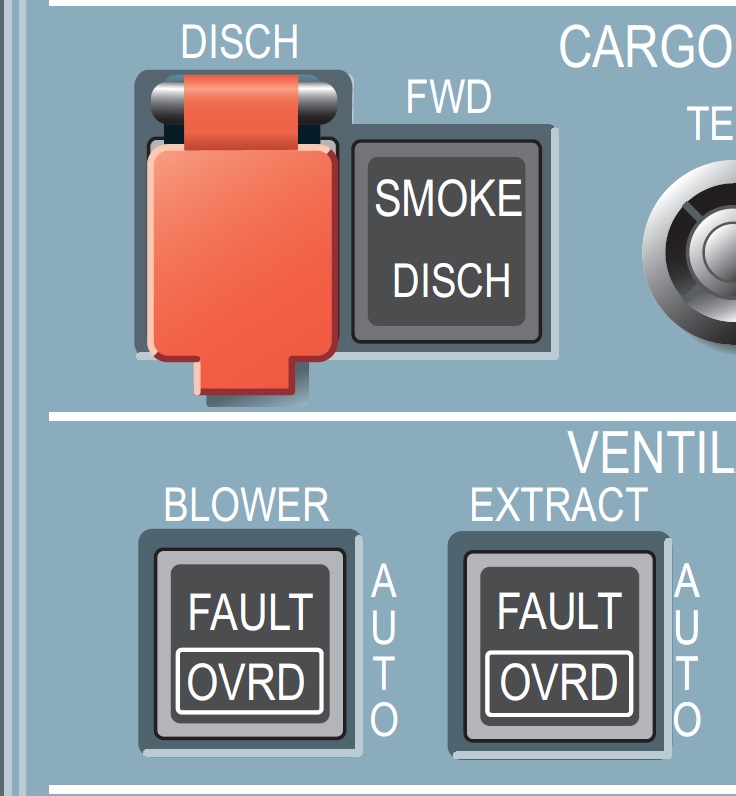I'm not specialized in Airbus, but here is a general answer for a part of your question:
The logic in cargo smoke panel is such, that the black button is an indicator. If smoke is detected by both sensors, the"SMOKE" text will illuminate. Crew will then verify the alarm, and co-pilot will lift the red latch and activate the fire bottle by pressing the button under the latch. The button on the right will then verify the fire bottle discharge by illuminating the "DISCH" text.
This video will explain how the CARGO SMOKE panel works.
The logic here is to separate visually and physically the indications and operating of a critical system. This will mitigate the possibility of mistakes, which is of great importance, since (as DeltaLima pointed out in the comments) the discharging of a fire bottle is not reversible, you only have one chance / bottle.
The ventilation system is not (as) critical from safety point of view, hence indication and operating can be integrated. Under normal condition, which is "AUTO" the button is not illuminated. Pilot can shut of the system by pushing the button which will then illuminate the "OVRD" text. If the system detects a fault, obviously the "FAULT" text will illuminate.
As for the placement of separate panels, they are generally placed such that they form logical groups and they are as close as possible to the crew member that is usually supposed to operate them.



